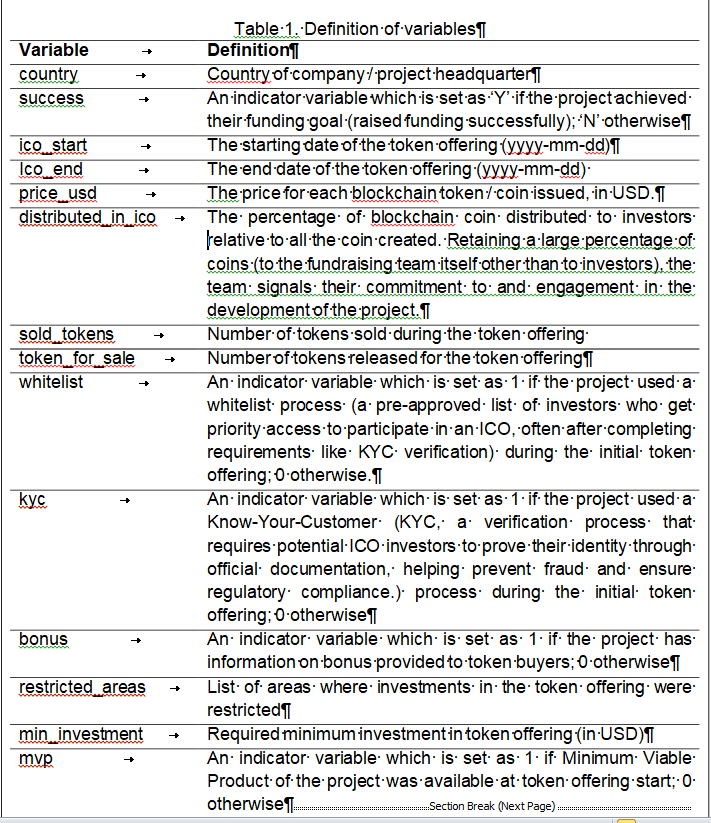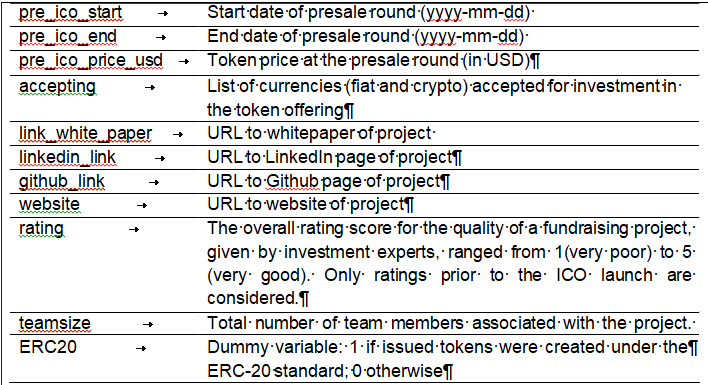Initial Coin Offerings (ICOS) are a novel crowdfunding method for firms to raise capital. In contrast with traditional methods, ICOS allow small businesses to raise funds by issuing and selling digital tokens
LUBS5990 Machine Learning in Practice Sem 2 Assessment Coursework Brief
Background
Initial Coin Offerings (ICOS) are a novel crowdfunding method for firms to raise capital. In contrast with traditional methods, ICOS allow small businesses to raise funds by issuing and selling digital tokens or coins supported by blockchain technologies. Those tokens or coins can be traded on cryptocurrency platforms for financial investment, and can also be used in the issuing company's ecosystem, such as accessing specific services or products on their platforms.
ICO teams typically set specific fundraising targets and timeframes (e.g., aiming to raise $5 million within 45 days). The funding operates on an 'all-or-nothing' basis: if they raise sufficient funds to achieve their targets, the ICO will be deemed a ‘success’. Otherwise, the ICO fails, and they will receive nothing. Companies must convince potential investors through detailed project descriptions, technical whitepapers, and team information published on their campaign pages. Figure 1 shows an example of an ICO fundraising page. Understanding what factors contribute to ICO success has become crucial for entrepreneurs, investors, and market regulators in the evolving digital finance landscape.
Your Task
The aim of the assignment is for you to demonstrate:
- Your ability to understand data
- Your ability to prepare data for modelling and evaluation
- Your ability to apply various modelling techniques to the processed data
- Your ability to validate and interpret the performance of different models
- Your ability to present your analyses in the form of a technical report
You have been provided with a dataset with attributes about the ICO projects from different fundraising teams/companies. For this coursework, you need to predict whether a team/company will reach its fundraising goal successfully through the ICO, using various machine learning models. Table 1 shows the definition of variables in the dataset.
Achieve Higher Grades with LUBS5990 Assignment Solutions
Order Non-Plagiarised Assignment


You can create your variables based on existing variables. For example, the duration of the fundraising campaign can be obtained by using the start and end dates; whether a fundraising team is in the USA can be determined by the country variable. You can also use other possible and well-justified predictor variables. You could even link the given dataset with external data, such as overall economic data or Bitcoin prices during the campaign period, to create useful variables.
What You Should Submit
- A report with a summary of the analyses performed. The potential readers of this report could be entrepreneurs, investors, market regulators, researchers, or anyone who is interested in the ICO sector.
- One .zip file containing all code/Excel files for all analyses that are used to complete this coursework. This will not be included in the word count. All must be included in the submission if you use more than one tool/file.
Your report must have the following sections:
Introduction (Business understanding)
- This is to set the context of this report by describing the business context and the background of the task.
Data Understanding
- Show evidence of your understanding of the data, e.g. distributions, visualisations of the data, etc.
Buy Answer to This Assignment & Raise Your Grades
Data Preparation
- Describe how you pre-process the raw data to get it ready for modelling in the next stage. E.g., how you handle missing values, incorrect values, and outliers; how you transform the data format, etc.
- Provide evidence that you have investigated relationships among the predictors.
Modelling
- Describe different classification techniques that you have considered for this task.
Evaluation
- Describe in detail how you have tested your models. To earn high marks, you should show evidence of using various robust measures to evaluate the modelling techniques you have selected.
Conclusion (Deployment)
- This section includes findings and conclusions from your analysis
Word Count:-3500 words

